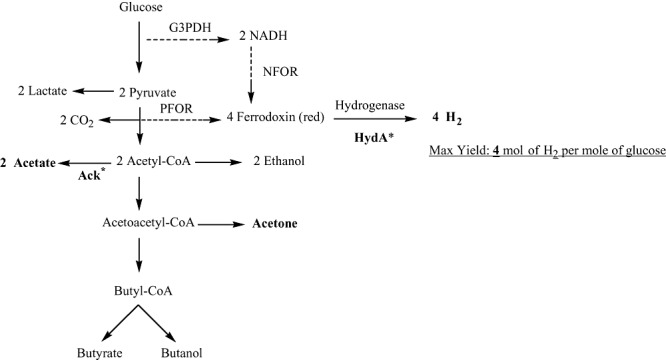Figure 3.

Fermentative hydrogen production from glucose by C. acetobutylicum, a strict anaerobic bacterium. Hydrogen can be produced through the action of PFOR and NFOR. The maximum theoretical hydrogen yield is 4 mol of H2 per mole of glucose, with acetate or acetone as the fermentation end‐product. The glucose metabolic pathway results in lactate, acetate, ethanol, acetone, butanol and butyrate as fermentation end‐products. The proteins shown in bold with an asterisk have been studied in Clostridium species through metabolic engineering in order to enhance biohydrogen production. G3PDH, glyceraldehyde‐3‐phosphate dehydrogenase; PFOR, pyruvate ferredoxin oxidoreductase; NFOR, NADH:ferredoxin oxidoreductase; NADH, nicotineamide‐adenine dinucleotide; red, reduced.
